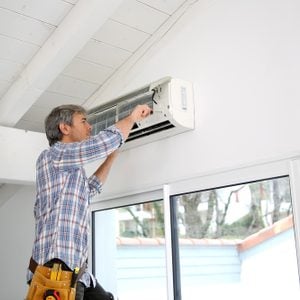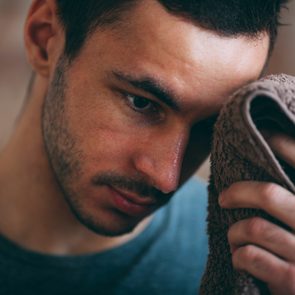There’s a Right Way to Set Your Air Conditioner—Here’s How
Updated: Mar. 14, 2024
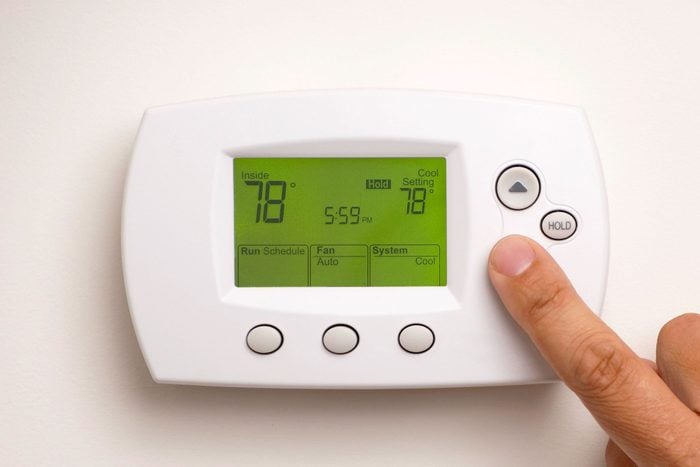
Protect your air conditioner, the power grid and our planet with these tips for how to set your thermostat
We’ve officially approached the dog days of summer. Record-breaking heat waves are sweeping the country, and Americans are searching for ways to stay cool and safe. In sweltering heat, people are often tempted to crank down their thermostats, setting them to a dramatically lower temperature than the ambient weather. However, experts speaking to the Washington Post revealed that this method can be both dangerous and ineffective. Here’s everything you need to know about setting your thermostat for the hot months ahead, including why cranking it down is inadvisable and what to do instead.
Get Reader’s Digest’s Read Up newsletter for humor, cleaning, travel, tech and fun facts all week long.
Why you shouldn’t crank down your thermostat
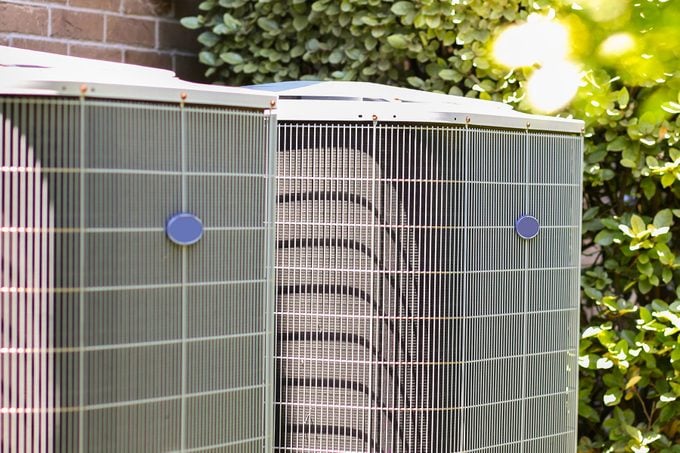
There are a few main reasons you should never crank down your thermostat to cool your home. The first, according to Jennifer Amann, senior fellow in the buildings program at the nonprofit American Council for an Energy-Efficient Economy, who spoke to the Washington Post, is that, “It’s not going to really cool your home any faster.” Shichao Liu, an architectural engineering professor at Worcester Polytechnic Institute in Massachusetts, who also spoke to the newspaper, underscores this point, explaining: “People think, ‘If I make the thermostat set point 60, I’ll get more cooling than a set point at 70,’ but that’s not correct. You get the same amount of the cooling.”
Additionally, every air-conditioning system has a certain cooling capacity. If you set your thermostat to a temperature that exceeds that capacity, your system will just keep running trying to meet it. This puts unnecessary strain on your air-conditioning system, which will shorten its lifespan.
Last, the continuous running of the air conditioner guzzles energy. This hurts the planet and can lead your cooling efforts to backfire. When everyone runs their air conditioners continuously, the power grid can fail, and then you may not be able to use your air conditioner at all.
How to properly set a thermostat
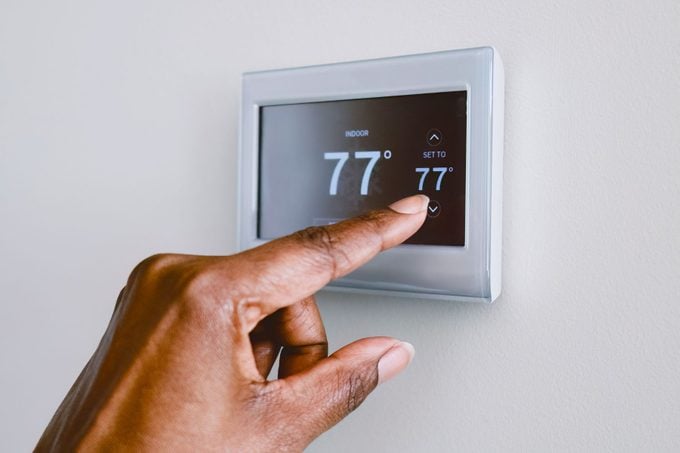
When setting a thermostat, gradual changes make a huge difference. Start by checking your thermostat’s cooling capacity by calling the manufacturer or your landlord. If you can find this number, never drop the temperature lower than it. If you can’t locate the capacity, try to stick to temperatures between 71 and 77 degrees. One 2014 study by the University of Georgia, Athens, found that most people report feeling comfortable at these temperatures.
If you can manage it, try to stick to the upper margin of that range. Co-author of the study and professor of practice emeritus Thomas Lawrence said, “If a person was in their house and they’re going to be there all the time, they could maybe turn up to 76 or 77 or so.” He then added, “People should realize that if it’s really hot outside, having [the thermostat] at 77, 78 or even more, on the inside for a little while still feels good.”
Setting your thermostat slightly higher than you would think to can make a huge difference in supporting our power grids, Amann notes. She encourages those who are away from home to set their thermostat 5 or 10 degrees higher than they would if they were home. One degree of a thermostat increase can save approximately 1% of energy. As such, Amann says, “If everyone who is away from home has set their thermostat so that they’re saving at least 5% of their cooling, then across all the houses that can really make a difference in addressing that peak load.”
Finally, be aware of peak energy-consumption hours. When it’s hottest outside during the afternoon, most people are cranking their air conditioners. As such, this is when the power grid is most strained, so increasing your thermostat by even a single degree can make an impact.
More energy-efficiency tips
First, to get the best cooling out of your air conditioner and save energy, make sure you perform the proper maintenance on your unit. If your air conditioner isn’t working up to par, remember that you can keep your home cool without air conditioning. So before you turn to the thermostat, try these alternative ways to cool your home. They’ll have you feeling comfortable in no time!
Sources:
- Washington Post: “Don’t crank down your thermostat when it’s hot out. Do this instead.”
- University of Georgia, Athens: “Thermal comfort evaluation in campus classrooms during room temperature adjustment corresponding to demand response”

